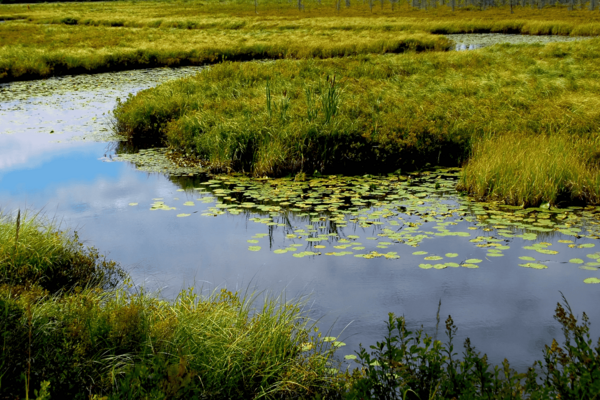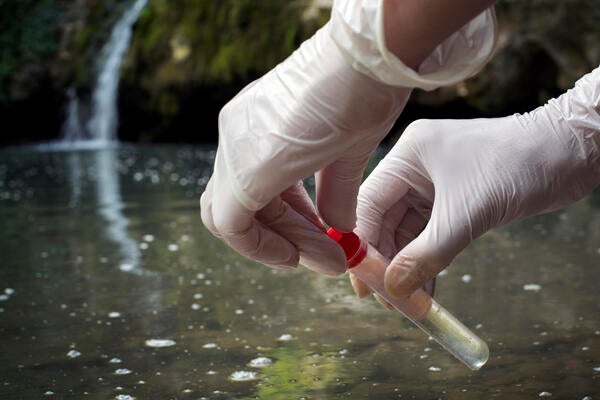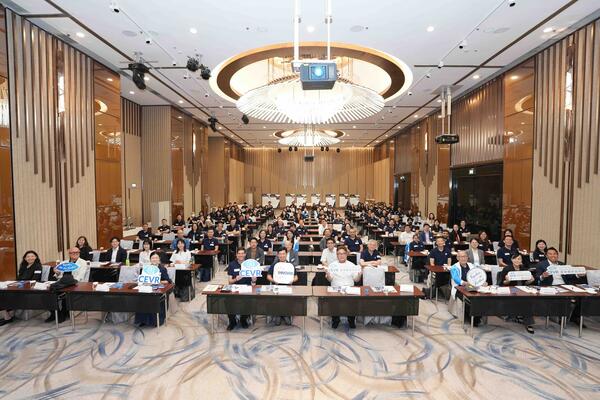
Managing the risk of new contaminants
Mark Servos, who is Canada Research Chair in Water Quality Protection, studies the cumulative effects of diverse human activities in watersheds on ecosystem health.

Mark Servos, who is Canada Research Chair in Water Quality Protection, studies the cumulative effects of diverse human activities in watersheds on ecosystem health.
By Staff Communications & Public Affairs
Mark Servos works on a water testing project with graduate students Jennifer Kormos, centre, and Heather Loomer, right.
Most of today’s water treatment systems are good at removing solids, bacteria, and parasites.
But the water treatment plants currently in use weren’t designed to remove the diverse array of chemicals, such as industrial chemicals, pharmaceuticals, and nanomaterials, that have been recently detected in wastewater, says Mark Servos, who is Canada Research Chair in Water Quality Protection.
As an ecotoxicologist, Servos assesses the risk of emerging contaminants, researching the impact of contaminants on aquatic life at levels “from gene expression all the way up to whole communities of fish,” he says.
At his Waterloo Aquatic Toxicology and Ecosystem Remediation Laboratory, Servos and his team investigate issues such as the bioaccumulation of contaminants in food webs, effects of pharmaceutical and sewage exposure on fish endocrine systems, and the cumulative effects of diverse human activities in watersheds on ecosystem health.
Although the levels of emerging contaminants that have been detected “represent a minimal risk to humans, there is a potential threat to the ecosystems that support our social and economic prosperity,” says Servos.
“Even trace levels of some of these contaminants can alter reproductive processes in fish, threatening the sustainability of these populations and reducing the resiliency of the environment.”
That’s why Servos focuses on developing the new risk assessment and management tools required to protect and improve water quality across watersheds.
“You can’t eliminate risk, but you can manage and minimize it,” Servos says. “That’s what we’re trying to do.”
By integrating chemistry and biology, he is creating tools for isolating the likeliest culprits, and testing approaches to minimizing their impacts in the environment.
Servos works with government and industry to incorporate his innovations into practical applications such as improvements to water treatment plants.
Since such modifications can cost hundreds of millions of dollars, he says, “we want to give the decision-makers the best science we have, so they can make the best decisions on how to minimize risk as economically and effectively as possible.”

Read more
Waterloo research is leading the fight against an invasive plant threatening Ontario wetlands

Read more
Wastewater monitoring indicates early upward trends in COVID-19 and Influenza

Read more
The InnoHK Centre for Eye and Vision Research aims to bring eye and vision research to market through Waterloo-Hong Kong partnership
The University of Waterloo acknowledges that much of our work takes place on the traditional territory of the Neutral, Anishinaabeg, and Haudenosaunee peoples. Our main campus is situated on the Haldimand Tract, the land granted to the Six Nations that includes six miles on each side of the Grand River. Our active work toward reconciliation takes place across our campuses through research, learning, teaching, and community building, and is co-ordinated within the Office of Indigenous Relations.